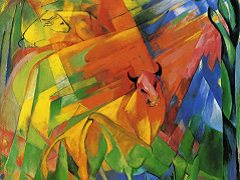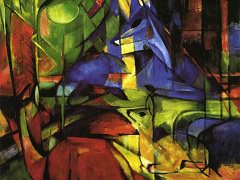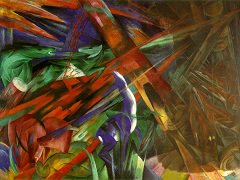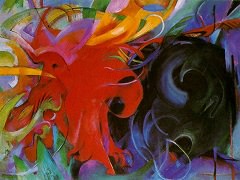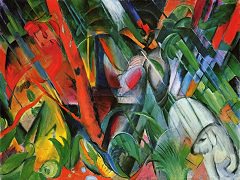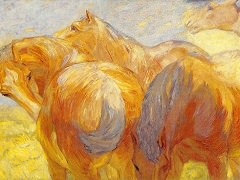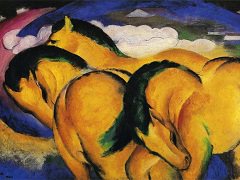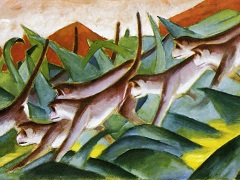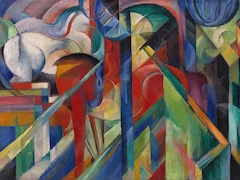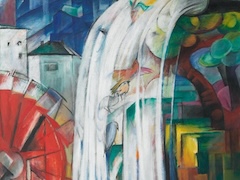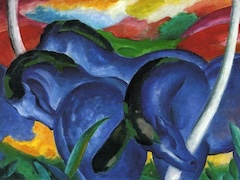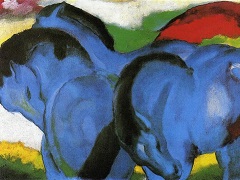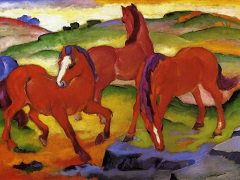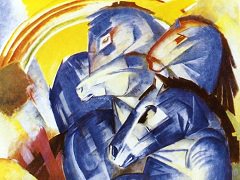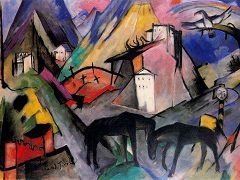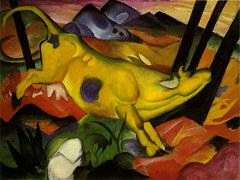Blue Horse, by Franz Marc
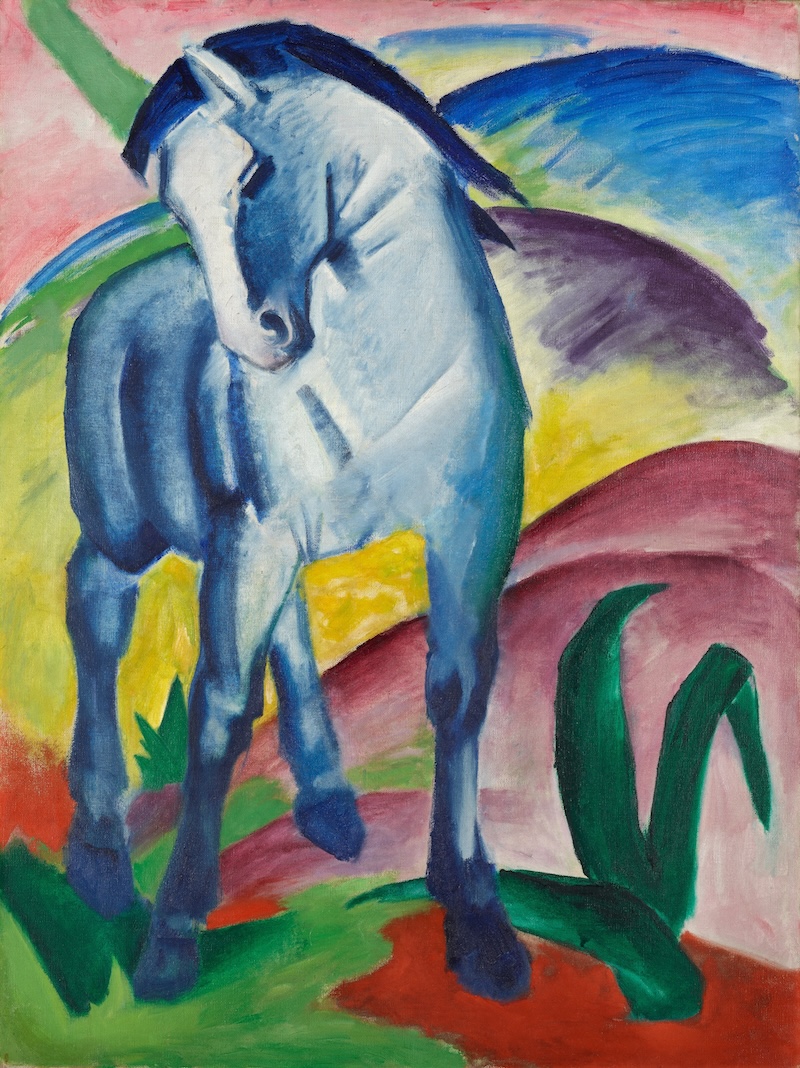
Wassily Kandinsky wrote Concerning the Spiritual in Art in 1911, at the time Yellow Cow was painted. In that book, he emphasized the significance of the triangle as a symbol of the striving soul of the individual and humanity in general. So important was the triangle to Kandinsky that he employed it as part of his signature in nearly all his prints throughout his career. Kandinsky dealt in typological parallels; for example, he wrote of the abstract impact of the triangle equaling the finger of God in The Creation of Adam by Michelangelo. ( in a similar spirit, the horse and rider later become equated with a circle.) In the course of his 1911 discussion of the triangle and its hierarchical segmentation into spiritually advanced and conventional layers of human awareness, Kandinsky interjected another parallel: "An invisible Moses descends from the mountains and sees the dancing around the golden calf." With this description, the mountain, a prominent from in Kandinsky's paintings of 1911-14, possesses the same meaning he ascribed to the triangle. Marc, who was already a close friend of Kandinsky in 1911, was to write of him:
At least there is a man who can move mountains - and how grandly he has done so; to know this is inexpressively reassuring.
Later, Paul Klee, another associate, would also employ the triangle-mountain with great frequency.
Because of the importance of this form to Kandinsky, and the subsequent adoption by Marc and Klee, the triangle-mountain was likely a logo of Blue Rider ambitions by the time Yellow Cow was created. Given Marc's identification of blue with maleness, and the probability that Blue Horse I is to a degree a self-portrait, the blue mountain can be seen as the embodiment of Marc's aspirations - artistic and otherwise - which in their spirituality complement the yellow sensuality of the cow. If the Yellow Cow is some how symbolic or evocative of Maria, and the blue mountains verges on being Marc himself, then the Yellow Cow becomes a kind of wedding picture for the newly married couple.

